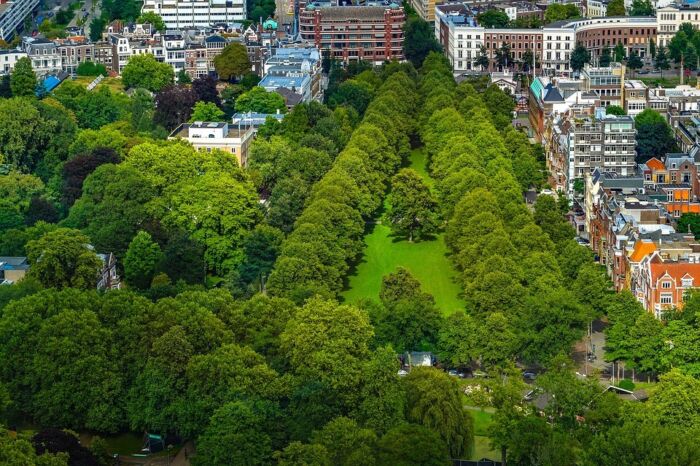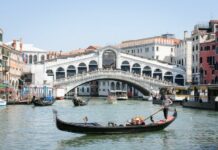
The waves of drought and heat characterized not only the last summer season, but also the autumn. According to the World Health Organization (WHO) the scorching heat of summer 2022 caused at least 15,000 deaths in Europe: «Hot stress is the main cause of death related to weather conditions in the European region» and «Extreme temperatures can also exacerbate chronic diseases such as cardiovascular, respiratory and cerebrovascular diseases, or conditions related to diabetes», says Hans Kluge (WHO Regional Director for Europe) during the UN climate change conference held last November in Sharm el-Sheikh. In Italy there has been a 20% increase in deaths among the elderly population and the relevant ISTAT data indicate a strong dependence between mortality and extremely high temperatures last July. The record heat was recorded also in autumn with temperatures abnormally above the seasonal average: daytime peaks of 25 μc (and above) were recorded for example in Sardinia and in general, typically summer values between 6 and 10 degrees above average. 2022 was the hottest year of the last 200 years, like an “endless summer”, marking exceptional and worrying air and water temperatures in the Mediterranean. The consequences are manifold and “materialize” in the melting of glaciers and in the reduction of water resources, in the spread of epidemics among men, in the propagation of phytopathologies and in the “migrations” of plant communities.
This last aspect can be deepened starting from the concept of “Phytosociology”, that is a branch of phytogeography that studies the plant communities to obtain an environmental indicator through the observation of the “plant associations”as groups of plants with floristic, ecological and chorological characteristics more or less constant over time. So the “plant communities” are a set of plant species interacting, in a defined space, thanks to similar ecological needs that make possible coexistence and competition. Climate change affects plant communities by changing their functionality and composition over time. The exceptional heat of October did not go unnoticed by the trees, but rather caused an extension of the photosynthetic activity and therefore of the vegetative season at the expense of the vegetative rest, latency phase essential for the survival of the plants and for their subsequent flowering that, if anticipated, will inevitably suffer the typical frost of the winter season. In summary, trees respond to climate change through some strategies, including:
• Adaptation: long-term, irreversible and permanent change, which occurs gradually and slowly causing even genetic transformations.
• Acclimatization: short-term, reversible or temporary change, exercised quickly and without any impact on the genetic component.
• Migration: slow displacement of plants and consequent change in the composition and density of plant stations as well as fragmentation of habitats
Like humans, trees also migrate to more hospitable places albeit very slowly. Migration has always occurred, just think of the glacial periods that have led the forests to move in search of a climate conducive to their growth. In particular, some studies related to the ascent towards the peaks by some plant species, due to global warming, distinguish the “fast migrating plants” (fast migrant) from the “slow migrating plants” (slow migrant) since the former have a climb rate of 58.7 m/decade, while the latter of about 13 m/decade. It is clear that the individual trees do not “move”, but an exceptional dispersion of seeds occurs. The fast-migrating species are provided with very light seeds or structures that favour their anemophilous dispersion, that is, by means of the wind; The seeds of plants with slow migration are defined as such because they are heavier and able to disperse in the environment in a longer time than the first. It might seem like a simple process, in fact not all seeds are able to germinate and give life to a new plant. The problem, compared to the past, lies in the speed of global warming that could far exceed the average speed (according to some studies of 1.5 meters per year) of forests to move to places suitable for their stay, blocking them in inhospitable places where their survival is severely compromised. The alarming consequence of these divergent timescales is basically the fragmentation of forest ecosystems and the specific immiseration that could materialise with the extinction of some local species and a serious depletion of biodiversity. Among the harmful effects of the sudden change in climate, on plant species, we can also find the occurrence of multiple phytopathologies induced by phytopathogens (the main plant pathogens are viruses, phytoplasms, bacteria, oomycetes and fungi). Global warming contributes to the proliferation of plant pathogens in areas where they would not live under “normal” conditions, and scientific studies are underway on the interconnection of pathogen, plant (host) and environment, now, by the increase in drought and heat.
On the other hand, trees and forests counteract the climate crisis by mitigating its effects. In fact, forests have many functions widely disseminated in recent times: protective function, productive, recreational tourism, naturalistic-environmental. The trees, with their foliage, intercept the rain retaining the water and reduce the possibility of flooding and landslides, generate wood and other products of the undergrowth, consolidate soils and slopes, limit noise pollution and greenhouse gases producing oxygen. By removing greenhouse gases from the atmosphere (especially C02) and storing them, forests mitigate extreme natural phenomena and contribute to climate regulation. According to data from the National Forest Inventory INFC2015, forests cover 36.7% of the Italian territory and the organic carbon seized amounts to 569 million tons: about 539 million tons in the epigeal part of woody species (woody vegetation at least 50 cm high) and 30 million tons in dead wood.
The goal of the measure “Protection and enhancement of urban and suburban greenery” of the National Recovery and Resilience Plan is to plant 6.6 million trees by 2024 to combat the climate crisis, however, after the initial enthusiasm, Perhaps the issue deserves more attention and reflection. The common mistake is to dwell on “quantity” rather than “mode”: it is ineffective to think about the spread of trees without evaluating their environmental vocation or putting in place strategies for planning and monitoring them. Not all trees can be planted everywhere because each environment has its own characteristics that make the presence of some trees possible rather than others: if you lose sight of this simple concept is quite easy to switch from advantages to disadvantages and could cause damage that would significantly and further burden the ecosystem. It is therefore necessary to plant the right trees! In addition, planting without carefully monitoring and planning the actions to be implemented would lead to the presence of trees that do not fulfill the purpose for which they were planted: An untreated tree may soon succumb to wind or be the main vector of disease among other nearby species. Technological progress allows you to perform “forest monitoring” through the Tree Talkers, that is, instruments equipped with sensors that can detect the different eco-physiological parameters of the trees such as temperature, humidity, evapotranspiration, photosynthesis activity and water transport from roots to foliar crown. In this way the trees “speak to us”, communicating their state of health and suggesting possible interventions that can be carried out and aimed at the correct management of the same. Trees also have another way to communicate their state of health and the effects of the climate crisis depending on how much the annual circles increase. For example, years with unfavorable climate correspond to narrower rings and years with more favorable climate correspond to wider rings. Therefore wood is to be considered a precious archive of information also for the reconstructions of the past climate. In essence, planting and caring for trees can help us counteract environmental decline, but this is not enough especially if the habits and actions impacting man remain the same. Trees can mitigate the problem, but not solve it completely without our cooperation.

Among the benefits of forests are certainly those related to the presence of trees in the city, which are able to provide a cool shelter from the summer heat, to lower the temperature of the asphalt, to capture smog and enrich the architecture of the urban environment. Again, not all trees can adorn our cities. Coldiretti has drawn up a list of plants “eat smog”, that is, able more than others in the capture of the pollutants present in the atmosphere: Curly maple, Ginkgo biloba, Black alder, Common elm, Wild linden and common ash would be the most suitable species for cleaning the air through the absorption of significant amounts of carbon dioxide and fine dust such as PM10. The ISTAT report “Environmental Data Collection in Cities”, made public in April 2022, provides a series of “prescriptions and norms for the protection, maintenance and fruition of the green, public and private, present on the communal territory, let alone planning addresses for green areas of future realization” as trees in urban areas require periodic inspection and inspection to avoid unpleasant consequences for public health and safety. Once again the importance of management and monitoring emerges as a simple planting. In fact, planting trees in urban space also requires knowledge of highly allergenic species or those whose very impressive roots would be invasive on the streets to the point of creating disruption in the pavement. Given these conditions, the optimal presence of trees enriches life in our cities. Just think that the urban greenery is a guarantee of greater appreciation of the structures surrounded by tree-lined streets. In fact, thanks to their functions and their ornamental value, the trees enhance the properties nearby making them more attractive on the market. In addition, the presence of trees improves the psyche and mood by lowering the levels of stress and anxiety, and the urban greenery favors outdoor social opportunities.
It is increasingly adopted the Japanese therapeutic practice of Shinrin-Yoku or Bath in the forest according to which walking in the woods, or in green areas, stimulates the effect “Biofilia”, ie the innate attraction of man to nature for which he feels love (the term “Biophilia” comes from the Greek and is translated as “love for life”). Swedish research has shown that the level of concentration and attention – of preschool children – is higher in open and natural environments rather than indoors, but the level of motor coordination is also improved. Attentiveness, closely linked to biophilia, is understood as the ability to concentrate effortlessly on natural stimuli, letting itself be carried away by Nature in its many aspects: abiotic (earth, light, water, climate) and biotic (flora, fauna).
The reasons why trees help us to live and survive are endless, but no one saves himself. The link between man and the forest appears increasingly solid, but the trees are also succubi as well as opponents of climate change. For this we need the cooperation of all if we really want to try to stem the disasters that have been inflicted on the Planet.






































